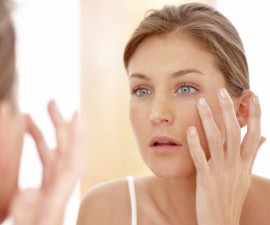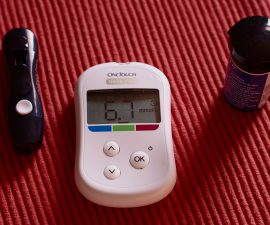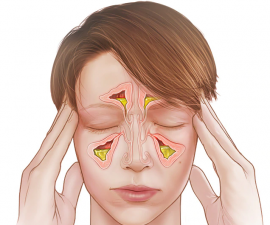… Continued …
Also, you can get more vitamin D through the following ways:
- Get enough exposure to the sunlight. Vitamin D can be produced naturally in the body in response to UV (ultraviolet) light. But be extra careful to the sun, psoriasis may increase the risk of skin cancer when you have aggressive exposure to the sun! So go with brief, daily exposure to keep safe!
- Fuel up on fortified cereal, another good source of vitamin D, to start the day. Hot cereal in the morning is recommended.
- Free-fat, or low-fat milk. Milk is one of popular choices when it comes to diet high in vitamin D and calcium. If you’re allergic to milk and dairy products, go with milk alternatives (e.g. almond milk, rice milk, or soy milk).
- Fatty fish, eggs, and fortified juices are also good for vitamin D booster. Just make sure to eat everything in moderation!
- If possible, ask your doctor whether you need vitamin D supplements.
Corticosteroid ointments
Among topical treatments for psoriasis, corticosteroids may be the most frequently prescribed. In fact they’re one of common choices for first-line treatment. Typically, they’re powerful enough to relieve inflammation of mild to moderate psoriasis.
The strength and dose of the medication is dependent on several factors. If the location of the affected skin is more sensitive (e.g. face, pubic area, and skin folds), low dose (mild) corticosteroid ointments could be used (some experts don’t recommended corticosteroids for such sensitive areas due to their side effects). In cases of psoriasis on smaller, tougher-to-treat and less sensitive skin – stronger corticosteroid is worth a try (get it with prescription to keep safe).
Corticosteroid drawbacks are as follows:
- You need to use it carefully (prescription is usually required). Use the dose as lowest as possible!
- The affected skin could be thinner (especially for long-term use).
- Not recommended for long-term use. It’s more recommended as a short-term medication (only use it during flares). Long-term use, particularly if improperly used, will make side effects more likely.
To reduce risks, use gloves when applying corticosteroid ointments. Or wash your hands cleanly with soap if you don’t wear gloves! Since it is a short-term medication, rotating it with other topical treatments is your best bet.
Calcineurin inhibitors
Calcineurin inhibitors, typically containing tacrolimus (Prograf) and pimecrolimus (Elidel), have been proven to be well-tolerated and effective enough to treat atopic dermatitis. How about psoriasis?
Their efficacy for psoriasis is debatable, but many experts believe these topical agents are worth a try because of their safety profile. Side effects are usually mild. These may include mild stinging, itching, or skin’s warmth sensation.
The penetration of these agents into hyperkeratotic psoriatic plaques is not as well as corticosteroids, making them less effective to relieve inflammation and plaque build-up. But they’re an alternative option for sensitive areas of the body where corticosteroids and other topical treatments are too strong (too irritating).
Sensitive body sites (like face, pubic area, or flexural areas) are more likely to have high natural absorption. Since the absorption in these areas is naturally increased, calcineurin inhibitors will work better – plus these agents are relatively safer! To increase their penetration, they could be used with other active ingredients for psoriasis such as salicylic acid.
However, calcineurin inhibitors are also not recommended for long-term use. Although their side effects are usually mild, they could be potential to increase the risk of skin cancer if not properly used.
What else?
- To make treatment work more effectively, some topical medications are covered (occluded) with waterproof of dressing, plastic wrap, or cotton socks. While this option increases the amount of medication absorbed into the skin, you need to do this carefully and not left for too long – which is particularly true for medications that have irritate potential and other harmful side effects.
- Bath solutions. Adding Dead Sea salts /Epsom salts or oilated oatmeal in a bath may help improve your psoriasis symptoms. Take this DIY-therapy for about 10-15 minutes, and then apply moisturizer afterwards.
- Anti-itch solution. Itching is common during flare-up. Several ingredients are approved by FDA for psoriasis itching. These include hydrocortisone (a low-dose, weak steroid), HCI (diphenhydramine hydrochloride), menthol, camphor, calamine, and benzocaine. Since they’re potential to cause skin dryness and irritation, they’re not recommended for long-term use.
It seems there are many different topical treatments to choose from. Many times, you take some time before finding one or combination of them that going to be the most effective to treat your psoriasis. This is usually dependent on some of the following factors:
- The location of the affected skin.
- The type and severity of your psoriasis.
- How your body responds to treatment, whether or not you’re allergic to certain medication. If you have certain health condition (other than psoriasis), this may also affect your treatment.
- The dose (strength) of treatment.
- Your general health.
Does phototherapy work?
The answer may vary. But phototherapy is one of common suggestions to support topical treatments mentioned above, especially if the medication you put on the skin doesn’t work as well as expected.
There are several types of phototherapy to choose from. To keep safe and have benefits most, here are pieces of helpful information:
Sunlight exposure
In appropriate exposure, natural ultraviolet (UV) is a good way to help slow growth of new skin cells, reducing psoriasis scaling and inflammation. But this doesn’t mean you need to get the exposure ‘out of control’. Too many rays can be counterproductive, increasing the risk of health problems such as skin cancer.
Therefore again — go with brief, daily exposures to sunlight (about 20 minutes per day). And use a sunscreen, SPF 30 or higher, to avoid counterproductive effects. Sunlight, even though in moderate exposure, could be dangerous for some people with psoriasis.
UVB (ultraviolet B) therapy with artificial lamps
Controlled, safe dose of UVB light from an artificial light source may be helpful enough to relieve mild-moderate psoriasis symptoms. It can be used either for single patches or widespread areas that don’t respond to topical treatments.
Although it’s given in controlled doses, there is still a chance for the lamps to give off UVA which might increase the risk of skin cancer. UVA will penetrate deeper into the skin. So make sure your therapist understands this risk clearly. Talk to her /him how to reduce the risk while being treated.
To improve the effectiveness of the therapy, it may be used with other treatments such as coal tar cream (this technique is called the ‘Goeckerman regimen’) or anthralin-salicylic acid paste (also called the ‘Ingram regimen’). Typically, the therapy is given several times, depending on how bad your psoriasis is!
PUVA therapy
It is a combination between psoralen (a light-sensitizing medication) and UVA. UVA exposure (in safe settings) is given after you take psoralen. Since UVA penetrates deeper into your skin, this will help make psoralen work more optimally.
PUVA is stronger than UVB therapy, it’s more aggressive treatment. It’s not recommended for mild and moderate psoriasis. But if the problem doesn’t improve with UVB therapy, PUVA might be suggested.




